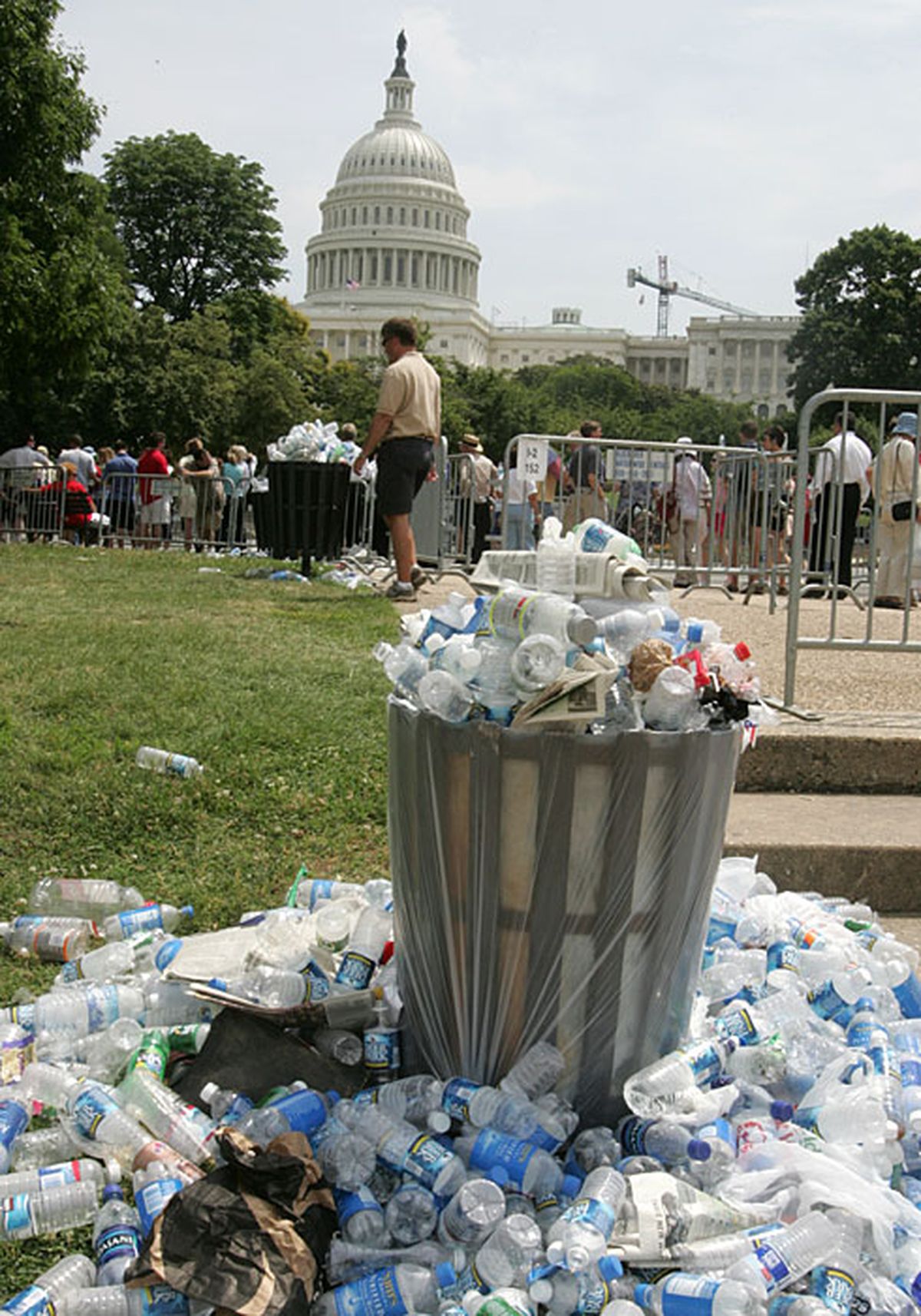Bingeing on Bottled Water

You feel good when reaching for the bottled water instead of a soft drink. After all, who needs the empty calories and artificial sweeteners? But to be fair handed, maybe it would be in your interest, and the world’s, to also skip the bottled water. Consider these statistics and decide whether or not America has a bingeing problem.
Cost
These distressed economic times accent the need for individuals and the world to conserve finances. Global consumption of bottled water reached 41 billion gallons in 2004, up 57 percent from just five years earlier. That works out to between $50 and $100 billion with the market expanding at the startling annual rate of 7 percent. The United States is the world’s leading consumer.
The average American consuming 145 20-ounce bottles a year. That water costs approximately 1,000 times more than tap water. Whether you purchase those bottles at $1 or $2.50 it is easy to calculate that we are talking about real money. Does the expense of today’s gasoline seem high? Realize that you are choosing to pay twice as much for the water.
Health
Municipal water falls under the purview of the Environmental Protection Agency, and is regularly inspected for bacteria and toxic chemicals. Bottled water is regulated by the Food and Drug Administration, which has weaker regulations than the EPA regulations for tap water.
About 70 percent of bottled water never crosses state lines for sale, making it exempt from FDA oversight. When the National Resources Defense Council (NRDC) tested more than 1,000 bottles including 103 bottled water brands, they found contamination exceeding allowable limits in at least one sample from about one-third of the brands, including arsenic, synthetic organics, and bacteria.
In addition to the evidence that impure water is frequently put into the bottles, there is concern about the leaching of harmful chemicals from the bottles themselves. Research results have been equivocal thus far.
Further testing remains to be done on bottles that have undergone ageing and temperature changes. It is known that these factors significantly increase leaching processes. Bottled water commonly undergoes significant storage periods and temperature changes during transportation over long distances.
Energy and Global Climate Change
Just saying NO to bottled water is a simple way to reduce our carbon footprint. Every year about 1.5 million tons of plastic goes into manufacturing water bottles for the global market, using processes that release toxics such as nickel, ethylbenzene, ethylene oxide and benzene.
The Pacific Institute estimates that production of bottled water for U.S. consumption in 2006 required the equivalent of more than 17 million barrels of oil. This released over 2.5 million tons of carbon dioxide, a major global warming gas.
Additionally, these figures do not factor in the sizeable energy and emissions costs of transporting the water. The water is first transported to the bottling plant, then the filled bottles are shipped to warehouses, stores, homes, and finally to landfills or recycling centers. By contrast, municipal water requires only a little energy to pump the water through pipes to our homes.
According to The Pacific Institute, the total amount of energy embedded in the use of bottled water is the equivalent of filling a plastic bottle one quarter full of oil. It also takes three liters of water to produce one liter of bottled water. Would it not seem rather profligate to dump that portion water down the drain prior to filling and drinking a glass of tap water?
Garbage
Bottled water currently accounts for 1.5 million tons of yearly waste, and each year the tonnage increases. Over 80 percent of plastic bottles are simply thrown away. In the U.S., more than 30 billion of them end up as garbage or litter each year. That is over 80 million bottles every day!
The bottles take up to 1,000 years to decompose. Not only do they litter our cities, highways and parks, but they ultimately reach the ocean. The Central Pacific Garbage Patch eventually accumulates all the plastic that is washed to or dumped into the ocean. This vortex of undecaying waste is rapidly expanding. It now covers over 10 million square miles (about the size of Africa) and extends 30 meters below the surface. Tortoises, albatross, and other species are starving and dying as their stomachs fill with indigestible plastic pieces.
Conclusion
In light of the above reasons, purchasing bottled water is decidedly unnecessary and unsustainable. The environmental cost would remain large even if every bottle were diligently recycled. Recycling helps but does not negate the major amount of energy expended in reprocessing and transportation to and from various sites.
Will you now join me in spurning the habit and do without? I have found it to be an easy practice to curtail and subsequently eliminate. It is not hard to accustom oneself to the use of commonly available water taps and fountains. Nor is it difficult to pack a reusable container as one travels about. The Food and Water Watch has a “No Bottled Water Pledge (www.democracyinaction.org/dia/organizationsORG,fwaa).”
I encourage you to take it and urge friends to do so as well. Furthermore, will you advocate for your schools, clubs and teams to adopt the policy of using bottled water only when no alternatives exist? Perhaps we can foster the time when indiscriminate use of bottled water will be considered as environmentally inappropriate as thoughtlessly consuming and throwing litter out the window. There really is little difference.